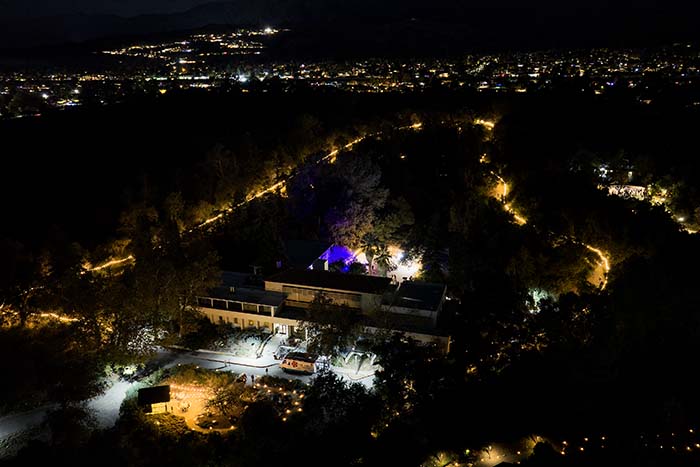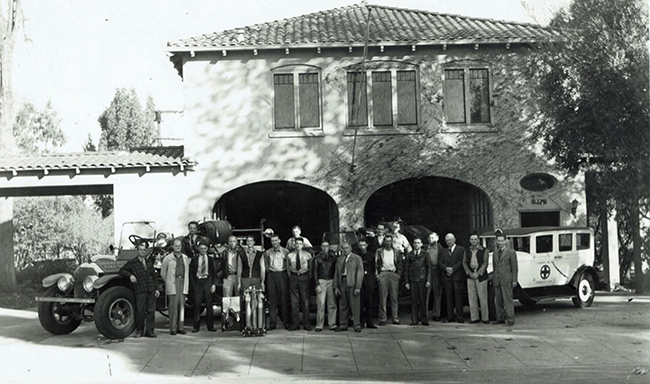Claremont is dry as a bone
It may have been April 1 but Governor Jerry Brown wasn’t fooling around when, by executive order, he extended and increased water rationing for California residents.
Mr. Brown is calling for the State Water Resources Control Board to achieve a statewide 25 percent reduction in urban water usage through February of 2016. The 25 percent reduction by water suppliers to California cities will be based on amounts used in 2013.
For Claremont residents, who are among the highest water-users in the state, average summer use in 2013 from June to August fluctuated from 330 gallons to 350 gallons per day, well above the state average of 125 gallons.
Claremont’s excessive water use didn’t go unnoticed by the State Water Board. Mr. Brown’s executive order directs the board to consider the per capita water usage of each service area (per gallon, per person, per day), and have areas with high per capita use achieve significantly greater reductions than cities with lower use. The city of Claremont is placed on a “tier four” in the proposed regulatory framework and is now tasked with a 35 percent reduction in water use city-wide.
On average, Claremonters used 314 gallons per person, per day in June 2014, rising to 332 in July and dropping to 302 gallons per day in August 2014, according to Drinc Portal, a state-run website that monitors city water usage.
Despite a sky-high gallon-per-day average, Claremonters have achieved a 9.6 percent cumulative reduction in water use from 2013 to 2015, equal to the state average of 10 percent. This is certainly an improvement but still a far cry from the 20 percent conservation initially requested by Governor Brown in 2014.
Bevin Handel, public information officer for Claremont, said the city’s current ordinance, which was adopted in 2009, already calls for many of the provisions contained in Mr. Brown’s order.
“We already have in our ordinance to use a nozzle and not to wash driveways,” Ms. Handel said. “A lot of it has been voluntary up to this point, so we’re moving into a mandatory phase.”
The city of Beverly Hills has received negative press lately, with the Los Angeles Times publishing several reports on excessive use of water to keep lawns green in the 90210. However, the 51,403 residents of Beverly Hills, according to drinc.ca.gov, used 172 gallons per capita in June 2013 and spiked at 278 gallons in August 2013, still below Claremont’s whopping 350 gallons per capita day.
It begs the question: Why is Claremont such a thirsty town?
“What we have, as opposed to some of the other communities, we have very large lots,” Ms. Handel explained. “The amount of turf and trees, we’re heavy on that outdoor watering. There’s still a lot of lawns.”
By contrast, in June of 2013, La Verne residents used 213 gallons, dropping to 179 in July, roughly the same as Upland residents. Pomona residents, whose water use is below the state average, used a mere 105 gallons in June 2013, dropping to 95 gallons in July 2013, according to drinc.ca.gov. In 2015, the State Water Board has asked Pomona to reduce water use by 20 percent; like Claremont, the city of Upland must realize a 35 percent reduction.
The governor proclaimed a state of emergency in January 2014, at which time he asked for a 20 percent reduction in water use by California residents.
In July of 2014, the city of La Verne handed down restrictions in response to the emergency regulations adopted by the State Water Resources Control Board. These included banning hose washing of paved surfaces, using only buckets or a hose with a shut-off nozzle for washing cars and barring refills of any decorative fountains.
Previous provisions remain in effect. For example, restaurants are to serve water only on request, and leaks from indoor and outdoor plumbing fixtures need to be repaired within 48 hours. La Verne also set up a “water waster hotline,” so that residents can easily and anonymously report water-wasting activity.
The city of Claremont enacted no new laws in response to Governor Brown’s 2014 appeal, but upheld the city’s water conservation requirements outlined in its ordinance passed in 2009.
“Those suggestions were already in place,” Ms. Handel said. “But we’ll move in to what we call stage two of the ordinance, which will mandate a two-day-a-week watering schedule, among other stricter restrictions.”
Stage two of Claremont’s water conservation ordinance will include twice-weekly, 15-minute watering schedules for lawns (once a week from November to March) and not between the hours of 9 a.m. and 5 p.m., mandatory 48-hour repair of leaks, banning refills of ornamental lakes or ponds, no hosing down paved surfaces and limiting refilling of more than one foot and initial filling of residential swimming pools or outdoor spas.
Ben Lewis, Foothill District Manager for Golden State Water, said GSW has been working with Claremont officials to reduce city-wide water use.
“Golden State has been meeting with Claremont city staff regarding their ordinance,” Mr. Lewis said. “There are some opportunities for conservation.”
In the meantime, city staff is looking at its water use, particularly in spaces that offer expansive grassy areas like Padua Park.
“What we’ve looked at with those parks, and where we have soccer fields or active recreation areas, we’ve kept that,” Ms. Handel said. “But on those hills at Padua Park, the areas that aren’t playable or programmed space, we’re continuing to reduce water use in those areas. And city-wide, we’re on a winter watering schedule.”
Next up for Claremont will be a turf reduction at city hall and Shelton Park and, starting in May, removal of grass on all the medians along Indian Hill.
The State Water Board will adopt the new regulations sometime between May 5 and May 7. Ms. Handel said that city staff is reviewing the city’s current ordinance to make sure it meets the governor’s executive order and to consider the logistics of enforcement.
The Claremont City Council will hear city staff’s recommendations at the Tuesday, April 28 meeting.
The city will also launch a program, similar to La Verne, where a resident can call in to notify the city of excessive water use. As stated in the 2009 ordinance, the city may first issue a written warning to a violator. A second offense within a 12-month period is punishable by a fine not to exceed $100, a third violation could result in a $250 fine and a fourth could cost the water-waster as much as $500.
New regulations from the State Water Board and Governor Brown apply to Golden State Water customers, pending approval by the California Public Utilities Commission, Mr. Lewis explained.
Upon approval by the CPUC, according to Mr. Lewis, violation of any of these prohibited or restricted water use activities may be punished by a fine of up to $500 for each day the violation occurs. Claremont city staff may issue the citation on their own or tickets may be issued in cooperation with Golden State Water.
As part of Mr. Brown’s plan, the State Water Board will direct urban water suppliers to come up with rate structures that “maximize water conservation” consistent with the new restrictions. No specific mention of Golden State’s WRAM charge was made, but presumably such tactics will be off limits with the ratification of the governor’s order.
The board will also adopt emergency pricing regulations and work with state agencies and water suppliers to “identify mechanisms that facilitate the adoption of rate structures and other pricing mechanisms that promote water conservation.” The CPUC must take similar action with investor-owned utilities like Golden State.
Urban water suppliers must also provide monthly information on water usage, conservation and enforcement on a permanent basis, according to the State Water Board.
The State Water Board is accepting feedback and comments on how a 25 percent state-wide reduction could be structured. Comments can be sent via email to Jessica Bean at Jessica.Bean@waterboards.ca.gov by April 13, 2015.
For tips on ways to conserve water, visit www.epa.gov/greenhomes/ConserveWater.
—Kathryn Dunn
editor@claremont-courier.com
Be sure to check out our aerial video of Claremont parks.










0 Comments